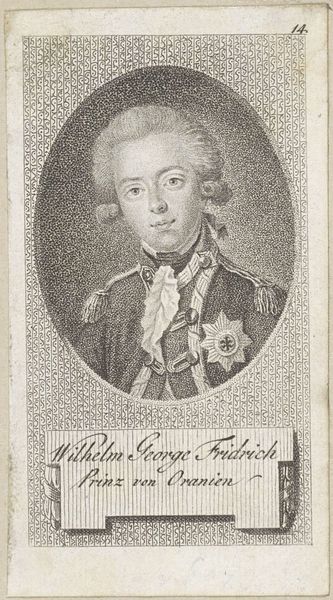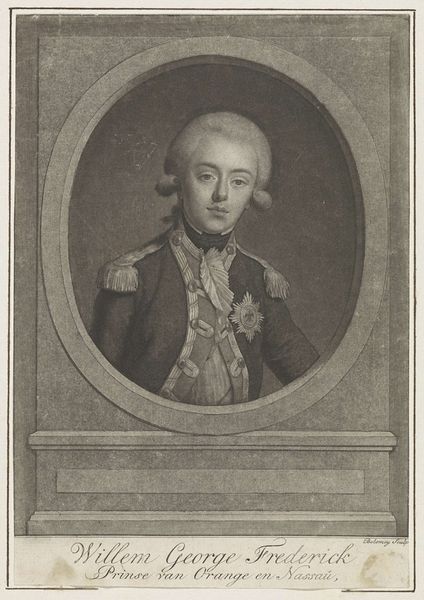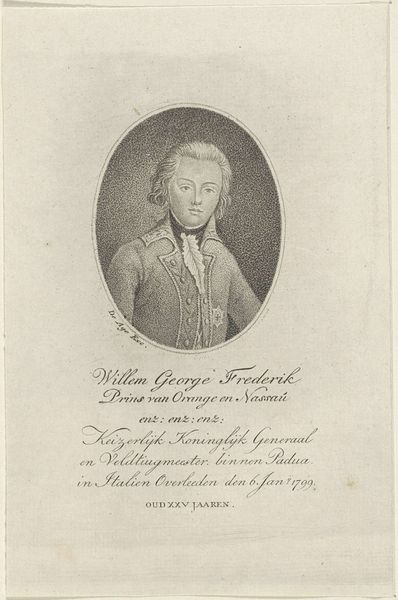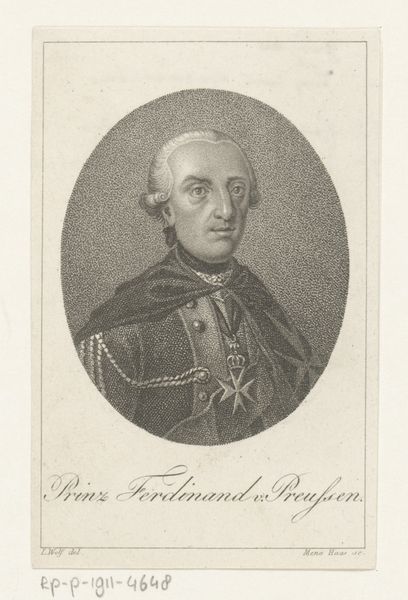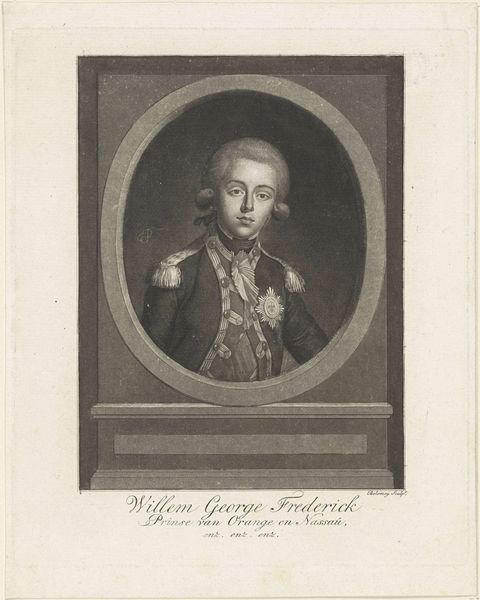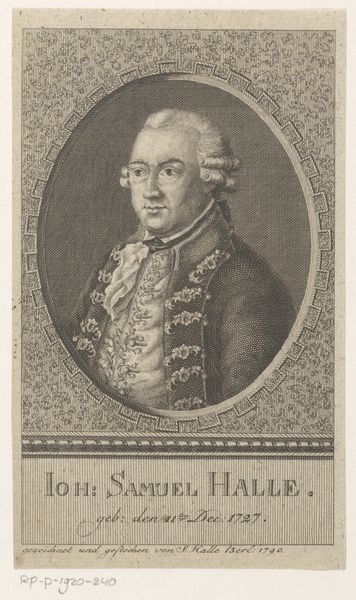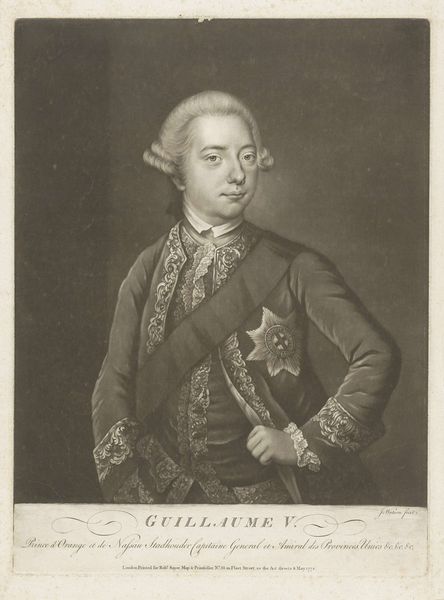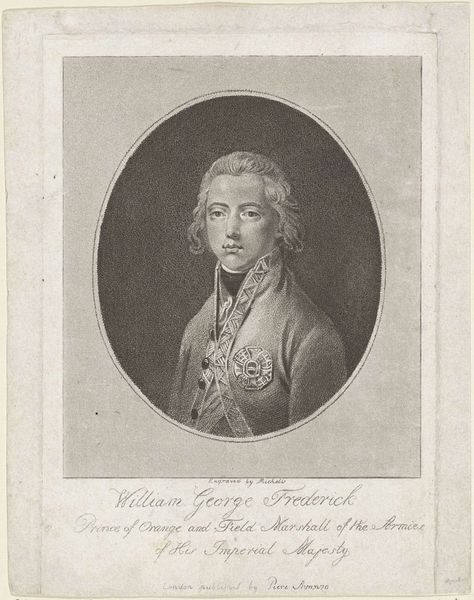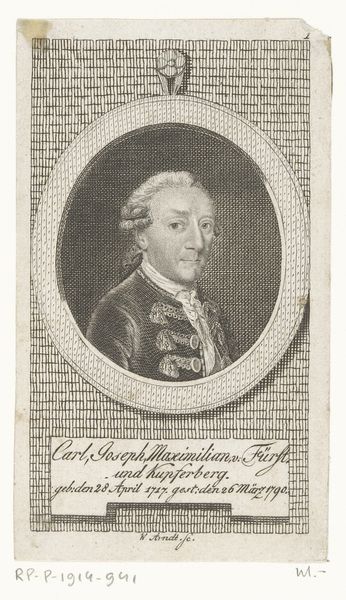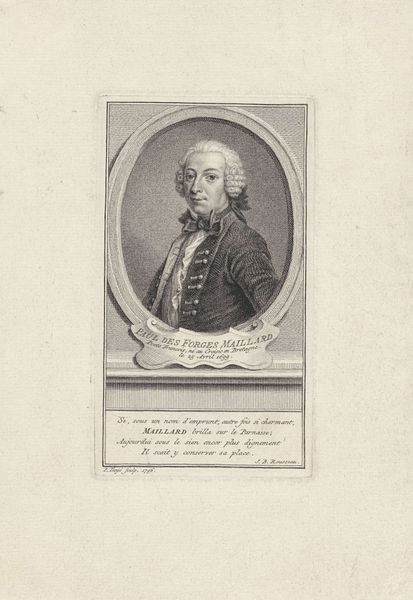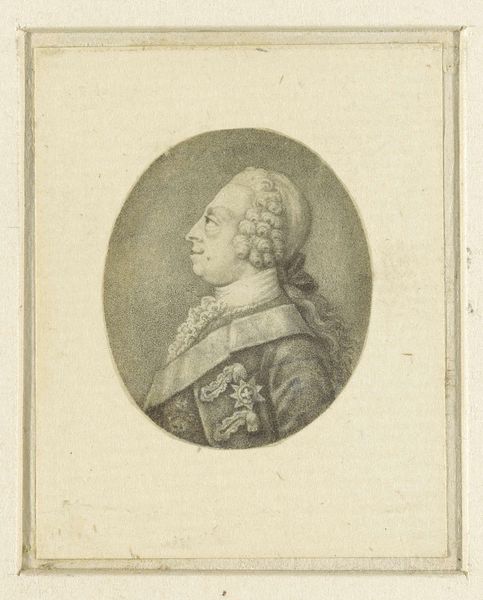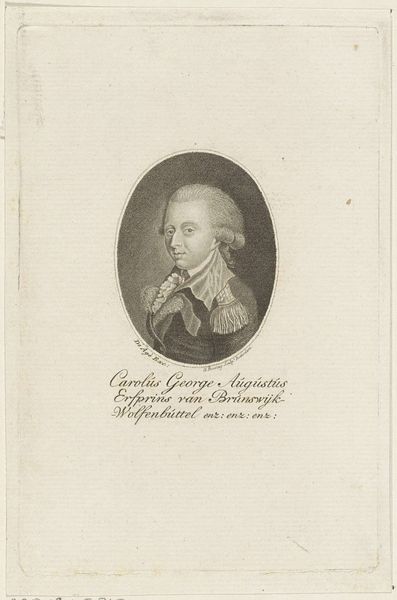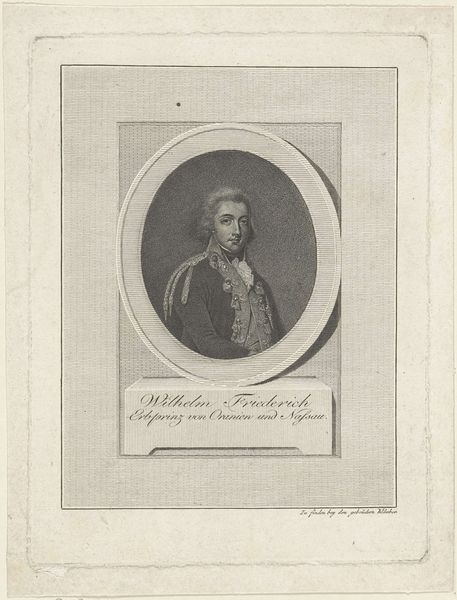
print, engraving
#
neoclacissism
# print
#
history-painting
#
engraving
Dimensions: height 106 mm, width 89 mm
Copyright: Rijks Museum: Open Domain
Curator: Editor: This is "Portret van Frederik, prins van Oranje-Nassau" by Hendrik Roosing, created between 1790 and 1801. It’s an engraving, and the detail is amazing! I notice the subject's stern expression. What strikes you about this portrait? Curator: I see a fascinating study in power and privilege at a moment of immense social upheaval. Think about it: a meticulously rendered portrait of a prince, produced during the rise of revolutionary fervor. This wasn't just art; it was a statement, wasn’t it? What do you think Roosing was trying to communicate by presenting Frederik in this very formal, almost austere, manner? Editor: Perhaps it was an attempt to project strength and stability in a time of uncertainty? To uphold the established order? Curator: Precisely! The visual language speaks volumes. Note the trappings of aristocracy: the ornate uniform, the meticulously coiffed hair. These aren’t just decorative elements; they’re coded symbols. They reinforce Frederik’s position within a rigid social hierarchy. How do you see this image playing into larger narratives about class and representation at the time? Editor: It makes me think about the stark contrast between the prince's privileged existence and the struggles of the common people. This portrait, intended to solidify his power, may have inadvertently highlighted the inequalities that fueled the revolution. Curator: Absolutely. Art doesn’t exist in a vacuum. Examining these pieces through the lens of history, of political struggle, is crucial to understanding their complexities. Editor: That’s a powerful way to look at it. It changes the way I perceive portraits like these. Curator: Indeed. It reminds us that art is always intertwined with social and political realities. Editor: Thanks for pointing out the intersections. I will reflect more on the historical context of artworks going forward!
Comments
No comments
Be the first to comment and join the conversation on the ultimate creative platform.
